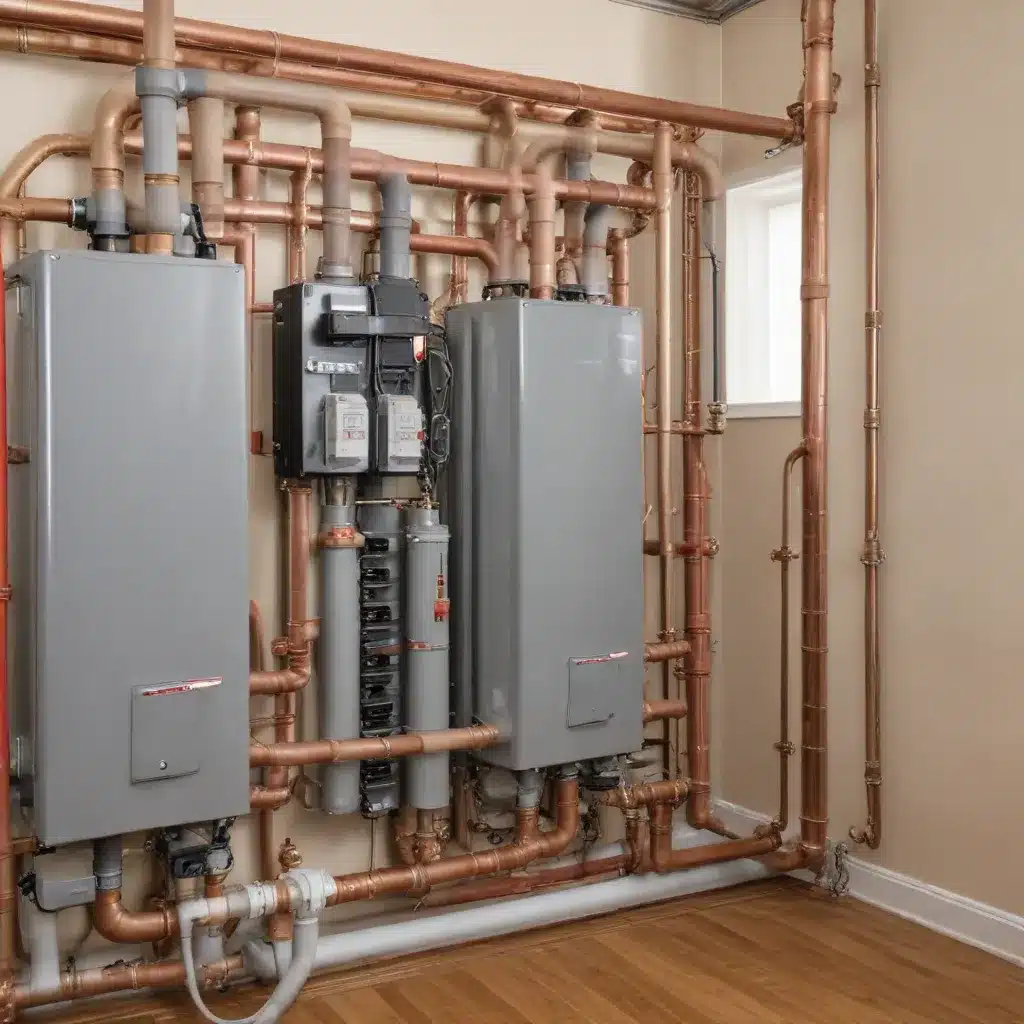
Understanding the Fundamentals of Hydronic Heating
Hydronic heating systems, also known as radiant floor heating, offer a highly efficient and comfortable way to heat your home or commercial space. These systems circulate warm water through a network of pipes or tubing installed beneath the floor, allowing the heat to radiate upwards and evenly warm the space. Unlike traditional forced-air systems that rely on convection, hydronic heating utilizes the principle of infrared radiation, ensuring a more consistent and comfortable temperature throughout the room.
One of the key advantages of hydronic heating is its energy efficiency. By harnessing the heat-transferring properties of water, these systems can operate at lower temperatures compared to forced-air systems, reducing energy consumption and lowering utility bills. Additionally, hydronic heating systems eliminate the need for ductwork, which can be a significant source of heat loss and air leakage in conventional HVAC systems.
Hydronic heating also offers superior comfort and indoor air quality benefits. The radiant heat from the floor creates a warm and cozy environment, eliminating cold spots and drafts. Furthermore, these systems do not circulate air, reducing the distribution of dust, pollen, and other allergens, resulting in a healthier living or working environment.
Optimizing Hydronic Heating Systems for Maximum Performance
To ensure your hydronic heating system operates at peak efficiency and provides optimal comfort, it is essential to consider the following factors:
System Design and Installation
The design and installation of your hydronic heating system play a crucial role in its overall performance. Proper sizing and layout of the tubing or piping network, as well as the selection of the right heat source (e.g., boiler, water heater), are essential for achieving efficient and consistent heat distribution throughout the space.
When designing your hydronic heating system, work closely with a professional HVAC contractor or designer who has expertise in radiant systems. They can help you determine the appropriate tubing layout, ensure proper insulation, and select the most suitable heat source based on factors such as the size of your space, heat load calculations, and local climate conditions.
Temperature Controls and Zoning
Effective temperature controls and zoning are vital for maximizing the efficiency and comfort of your hydronic heating system. Invest in programmable thermostats or a central control system that allows you to precisely regulate the temperature in different zones or rooms of your building.
Zoning your hydronic system enables you to tailor the heating to specific areas based on occupancy patterns, usage, and individual preferences. This targeted approach can significantly improve energy savings by avoiding heating unoccupied or seldom-used spaces.
Maintenance and System Optimization
Proper maintenance and ongoing optimization of your hydronic heating system are essential for maintaining its efficiency and longevity. Regular maintenance tasks may include:
- Checking and cleaning the boiler or heat source
- Inspecting and flushing the circulation pump
- Purging air from the system
- Verifying the proper operation of thermostats and control valves
Additionally, consider incorporating advanced monitoring and optimization techniques, such as:
- Implementing smart controls and sensors to track system performance and identify potential issues
- Utilizing data analytics to fine-tune the system’s operation and identify opportunities for further efficiency improvements
- Exploring innovative technologies like variable-speed pumps, which can automatically adjust flow rates to match the heating demand
By staying proactive with maintenance and optimization, you can ensure your hydronic heating system continues to provide reliable, energy-efficient, and comfortable heating for years to come.
Sustainable Practices for Hydronic Heating Systems
In addition to the inherent energy efficiency of hydronic heating, there are several sustainable practices you can adopt to further enhance the environmental impact of your system:
Renewable Heat Sources
Consider incorporating renewable heat sources, such as geothermal heat pumps, solar thermal collectors, or biomass boilers, to power your hydronic heating system. These clean energy alternatives can significantly reduce your carbon footprint and reliance on fossil fuels.
Thermal Storage Integration
Integrating thermal storage solutions, like water tanks or phase-change materials, can help optimize the efficiency of your hydronic heating system. These storage systems can store excess heat generated during off-peak hours or when renewable sources are readily available, and then release it when the heating demand is higher.
Insulation and Thermal Mass
Ensure your building’s envelope is well-insulated to minimize heat loss and maximize the efficiency of your hydronic heating system. Additionally, consider incorporating thermal mass, such as concrete or masonry, into your building design. Thermal mass can help absorb and store heat, contributing to a more stable and comfortable indoor environment.
Monitoring and Continuous Optimization
Implement a comprehensive monitoring system to track the performance of your hydronic heating system and identify areas for improvement. Utilize data analytics and smart controls to continuously optimize the system’s operation, adapting to changing weather conditions, occupancy patterns, and energy use trends.
By embracing these sustainable practices, you can not only enhance the efficiency and comfort of your hydronic heating system but also minimize its environmental impact and contribute to a more sustainable future.
Conclusion
Hydronic heating systems offer a highly efficient and comfortable heating solution for both residential and commercial buildings. By understanding the fundamentals of these systems, optimizing their design, installation, and operation, and incorporating sustainable practices, you can create a warm, energy-efficient, and environmentally-friendly indoor environment that meets the needs of your building’s occupants.
To learn more about the advantages of hydronic heating and how you can optimize your system, visit https://localbuilderlondon.co.uk/. Our team of experienced construction professionals and interior designers can provide personalized guidance and support to help you achieve your heating and energy efficiency goals.


